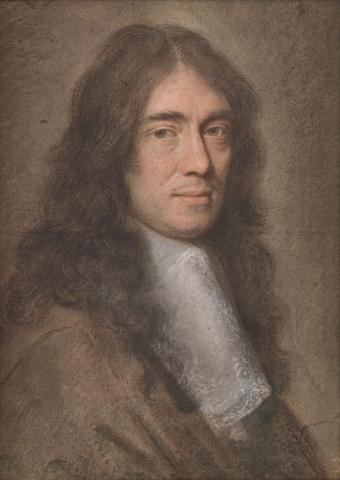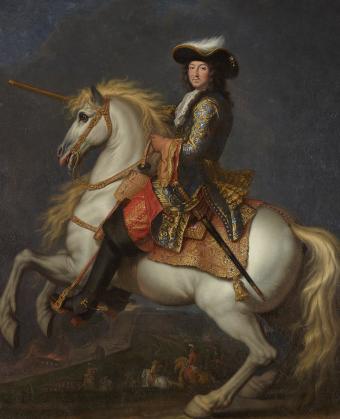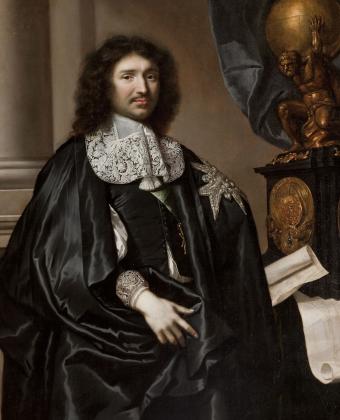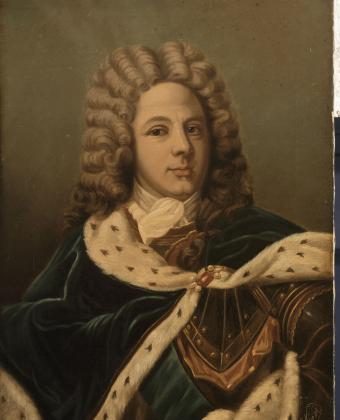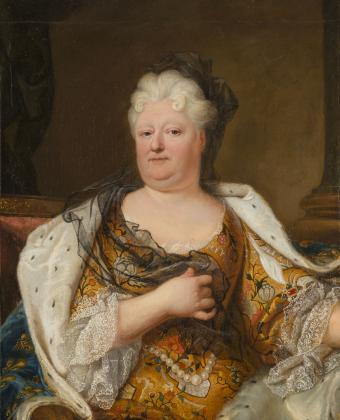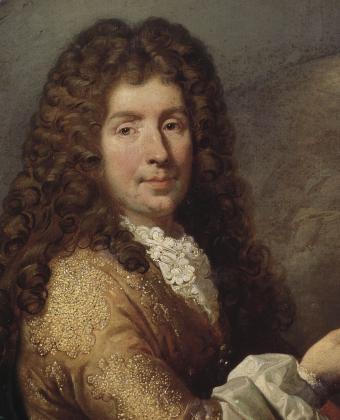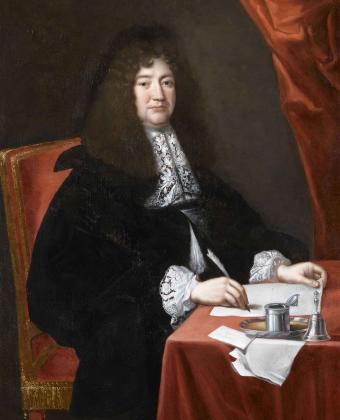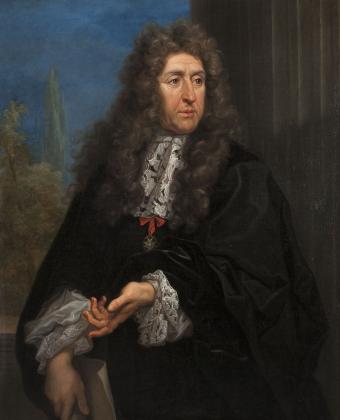As a literary man from a bourgeois family from Touraine, Charles Perrault was the brother of Claude Perrault, a doctor and architect and member of the Académie des Sciences and the Building Council.
Details of Establishment at the "Académie des sciences" and foundation of the "Observatoire", 1666, Henri Testelin © Château de Versailles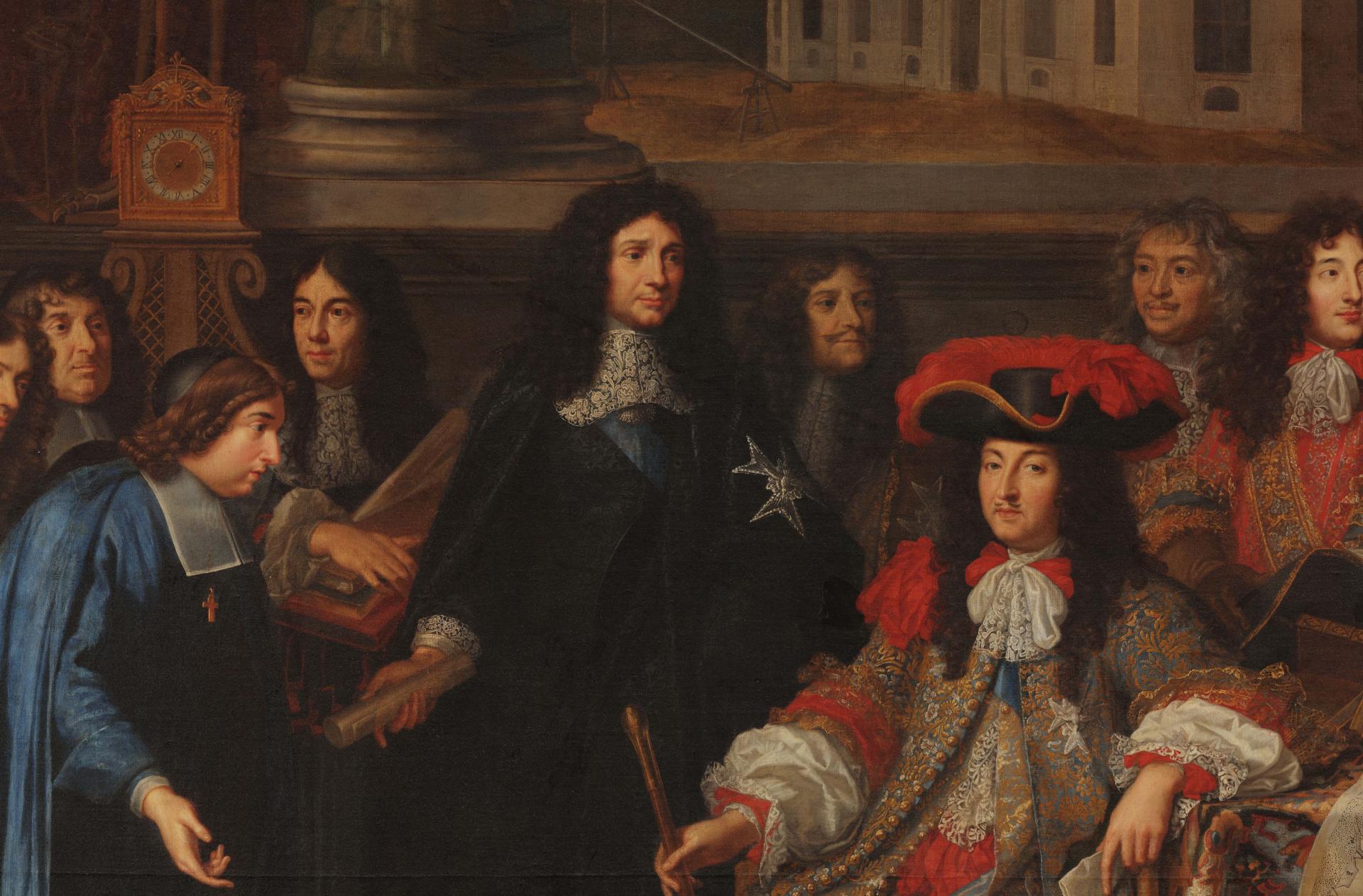
On the bottom right-hand corner is Louis XIV. On his left, wearing black, is Jean-Baptiste Colbert and, behind him, Charles Parrault is represented holding manuscripts.
Admitted as a lawyer in 1651, he became a clerk for his brother Pierre, the Receiver-General of Finance. In 1663, Claude Perrault was appointed Secretary of the “Petite Académie” created by Colbert, which later became the Académie des Inscriptions et Belles-Lettres. The powerful Minister then became his protector, helping to bring about his appointment as Premier Commis des Bâtiments in 1668 and his election to the Académie Française in 1671. Perrault also oversaw the major construction works of the time, including the Louvre and Versailles, where he is credited with the idea and plans for the Maze Grove.
After his fall from grace following Colbert’s death in 1683, Perrault left the “Petite Académie” to devote himself to his writing. He then initiated the Quarrel of the Ancients and the Moderns, pitting partisans of Antiquity against those in favour of modern, 17th-century literature. He took this a step further when he published Le Siècle de Louis le Grand (The Century of Louis the Great) in 1687.
Charles Perrault, Philippe Lallemant © RMN-Grand Palais (Château de Versailles) / Droits réservés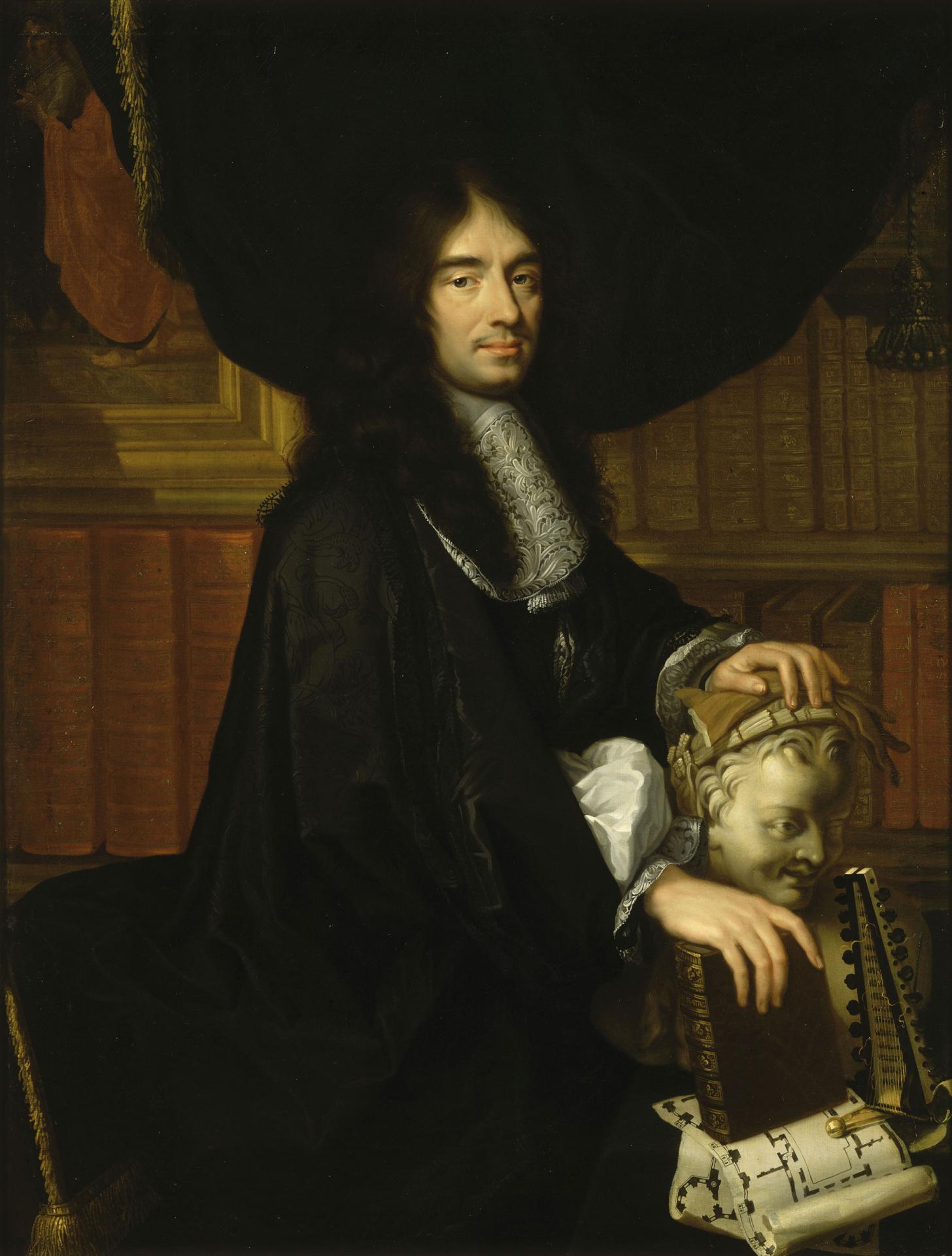
Yet history has not remembered Charles Perrault for his scholarly controversies or his work for the King’s Buildings. Instead, he is remembered as the author of Contes du temps passé, including Cinderella, Little Red Riding Hood, and Puss in Boots, which is sometimes attributed to his son Pierre.



